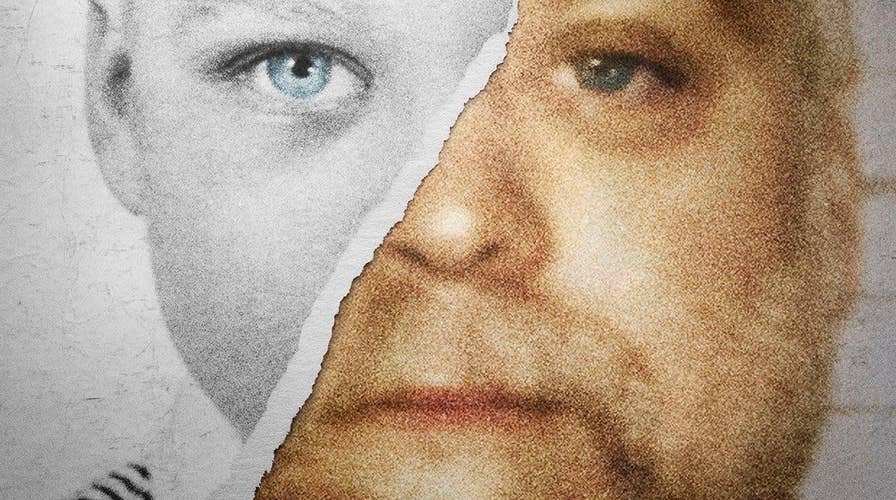Should 'Making a Murderer' case be re-opened?
Four4Four: Should Steven Avery's case be re-opened after success of Netflix's 'Making a Murderer' docu-series? Also: Why did it take so long to discover Stickland's body? Equinox ad features topless model; Who is best 'American Idol'?
The attention focused on the Netflix docu-series "Making a Murderer" has caused an outpouring of support for its subject, and a strong reaction from the man who sent him to prison.
An online petition calling for a pardon of convicted murderer Steven Avery and his nephew Brendan Dassey -- also in prison for being a party to murder, sexual assault and mutilating a corpse -- has tallied more than 249,000 signatures.
A website has been reportedly set up by the family with the help of the hacker group Anonymous, to allow people to donate money to their legal fund. So far, the family has reportedly collected $2,100 raised though the site and says an additional $1,200 has been sent to their home.
TMZ reports the money will be used for legal fees and a private investigator.
But Ken Kratz, who prosecuted Avery, is fighting back with what he says is evidence that the Netflix docu-series ignored.
[SPOILER ALERT: The following contains spoilers from "Making a Murderer."]
Kratz sent nine separate points to the TheWrap.com, including the claim that Avery told an inmate during his 18 years in prison that he was planning on building a "torture chamber" so he could rape, torture and kill young women upon his release. Kratz said the inmate also revealed Avery told him the best way to get rid of a body was to "burn it" because heat destroys DNA evidence. The body of the photographer Avery was convicted of murdering, Teresa Halbach, was found burned at Avery's Auto Salvage.
Kratz also told TheWrap.com that Halbach's phone, camera and PDA were found 20 feet from Avery's door, burned in his barrel, but said the documentary did not include this information.
Kratz suggested that Avery "targeted" Halbach citing phone records that show three calls from Avery's phone to Teresa's phone the day she was last seen. The prosecutor said that Halbach was "creeped out" by Avery who allegedly opened his door "just wearing a towel" when she visited his property for a photo shoot for AutoTrader magazine.
"She [went to her employer and] said she would not go back because she was scared of him," he told People magazine in an e-mail.
Avery claims that police planted the evidence and framed him for Halbach's murder. However, Kratz countered that Avery's DNA was found under the hood of Halbach's car.
"How did his DNA get under the hood if Avery never touched her car? Do the cops have a vial of Avery's sweat?"
Avery's defense team alleged that the blood found in Halbach's car may have been planted from an 11-year-old vial of Avery's blood.
Avery's defense attorneys also claim that the bullet recovered at Avery's garage was planted by police, which Kratz denies.
"Ballistics said the bullet found in the garage was fired by Avery's rifle, which was in a police evidence locker since Nov. 6, 2005," Kratz told People. "If the cops planted the bullet, how did they get one fired from [Avery's] gun? This rifle, hanging over Avery's bed, is the source of the bullet found in the garage, with Teresa's DNA on it. The bullet had to be fired before Nov. 5."
Kratz resigned from his position as Calumet County District Attorney in 2010 following a sexting scandal. He admitted to sending suggestive messages to a crime victim. He said he had a prescription drug problem at the time and said it's "exceedingly unfair to use that to characterize me as morally unfit" in "Making a Murderer."
"Making a Murderer" filmmaker Laura Ricciardi disputed Kratz's claims that the film was made as part of Avery's defense and left out key facts that would cast Avery in a bad light.
“Our opinion is that we included the state’s most compelling evidence,” Ricciardi, who made the film with Moira Demos, told The New York Times.
The filmmakers said they offered to interview Kratz for the film, but that he declined. He said he did so because he didn't think the film was balanced.
Avery previously spent 18 years in prison for sexual assault before he was exonerated and released in 2003 based on DNA evidence. He claims that the police officers who were humiliated by the overturn of his sentence framed him for Halbach's murder.







